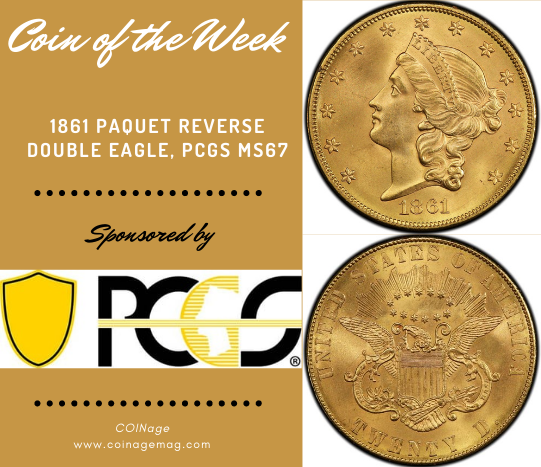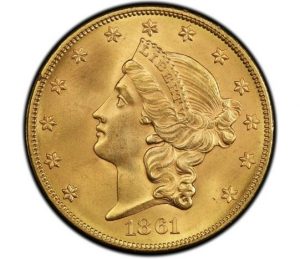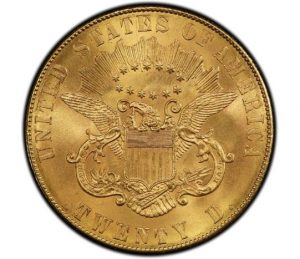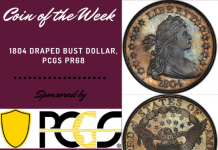
The 1861 Paquet Reverse double eagle is the Professional Coin Grading Services (PCGS) Coin of the Week. One of the rarest coins around, the 1861 Paquet Reverse double eagle offers just two known specimens. It has been regarded as a pattern, business strike and fantasy coin by various numismatic authorities. The 1861 Paquet Reverse double eagle appears similar to the original reverse design by James Longacre but carries minor modifications to the stars and other details by Assistant Mint Engraver Anthony Paquet.
The gold double eagle was struck for circulation from 1850 through 1932. It was the largest widely circulating coin the United States had ever issued. Its introduction into the United States monetary system occurred during the height of the California gold rush when tens of thousands took a chance on the Western territories to try their hand at making it big in gold. Many didn’t succeed – but many did, and quite well, too. Gold coins became a staple in the bustling frontier towns. The $20 gold coin carried the weight of major transactions.
Gold coin expert Doug Winter once said, “it is by far the rarest regular-issue double eagle, and no set of Liberty Head double eagles can be complete without the inclusion of this issue.” Meanwhile, in their book 100 Greatest U.S. Coins, Jeff Garrett and Ron Guth remark that “with the explosion of interest in U.S. double eagles, the 1861 Paquet Reverse double eagle is now held in the same regard as the great classics of the series.”
PCGS graded the specimen of the 1861 Paquet Reverse double eagle seen here as Mint State 67. This refers to the coin’s condition on the Sheldon Grading Scale between 60 and 70. Mint State coins have never been in circulation.
The coin sold for an astounding $7,200,000 to become one of the most valuable coins ever sold at public auction.
*Images courtesy of Heritage Auctions, www.HA.com.

















